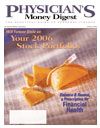Keep Your IRA Out of Creditors' Reach
The new Bankruptcy Abuse Prevention andConsumer Protection Act (BAPCPA) of 2005makes it much more difficult to wipe out debtby filing Chapter 7. Under the new regulations, whichwent into effect on October 17, most debtors will beforced to file under Chapter 13 and repay their obligationsvia a payment plan.
The level of protection afforded to IRA accounts inthe past has been determined by each state. InAlabama, for example, state legislators have failed totake a position on this subject, therefore leaving thecourts to decide on a case-by-case basis. While onecreditor in southern Alabama was able to successfullyclaim IRA assets, a central Alabama debtor couldprotect their retirement savings.
Broad IRA Protection
Although the BAPCPA toughened up certain areasof bankruptcy filing, IRAs actually receive more protectionthan ever before. Up to $1 million of assetsheld in traditional and Roth IRAs are exempt fromcreditors. Additionally, rollover IRA assets resultingfrom an employer retirement plan, such as a 401(k),403(b), or profit-sharing plan, will now receive unlimitedcreditor protection, thus resolving one of the longstandingconcerns held by many IRA owners.
For example, let's say you are a recently retiredphysician who contributed annually to your IRAaccount each year for the past 25 years, and it is nowworth $325,000. You then decide to roll over $1.5million from your profit-sharing plan into your IRA,bringing your total account value to $1.8 million.What is the risk to your IRA account? None. Regularcontributions to your IRA are protected up to $1 million,and your profit-sharing rollover is protectedwithout limit—regardless of where you live.
The new law not only reinforces the unlimited protectionthat currently exists for employer-sponsored401(k)s, 457s, 403(b)s, and governmental plans, but italso exempts bankruptcy estate plans for small businessand the self-employed, including SEP-IRAs, SIMPLEIRAs, Keogh plans, and solo 401(k)s.
Not Without Restrictions
Even if you withdraw money from an IRA and thenroll the funds back over into an IRA or other retirementaccount within 60 days, the new law will protect yourassets. Yet IRA protection is not without restrictions.Hardship and required minimum distributions, oncewithdrawn, are not sheltered by the BAPCPA. What'smore, this greater creditor protection to IRA assets onlyapplies in bankruptcy proceedings. State creditor protectionlaws apply to judgments awarded in all othercourts. The new IRA protective measures also do notshield against divorce judgments.
So what does all of this mean to you, the hardworkingand dedicated physician who somedaymay be faced with bankruptcy? The new law alsodraws attention to the following two issues:
1) Investing in retirement plans, whether yourcompany 401(k) or your personal IRA, is moreimportant than ever, providing a safe haven whereyou can confidently invest assets without concernabout future creditors.
2) It is vital that you maintain complete andaccurate records, since you will now want to beable to distinguish between personal contributionsto your IRA vs rollover contributions from qualifiedretirement accounts.
Since the BAPCPA now clarifies a formerly grayarea by unifying all states under one IRA protectivestandard, courts no longer have to determine IRAexemption on a case-to-case basis. Additionally,physician-investors have the incentive to roll overemployer-sponsored retirement earnings into an IRAafter they are no longer employed, rather than leavingfunds in their former employer's plan. Future retireesalso are encouraged to maintain two separate IRAs:one for rollover funds and the other for annual contributions,which makes it easy for the courts to discernbetween funds with unlimited protection(rollovers) and those subject to the $1-million cap.
, is the founder of the Welch Group,
LLC, which specializes in providing fee-only wealth management
services to affluent retirees and health care professionals
throughout the United States. He is the coauthor of J.K. Lasser's
New Rules for Estate and Tax Planning (John Wiley & Sons, Inc;
2001). He welcomes questions or comments at 800-709-7100 or visit
www.welchgroup.com. This article was reprinted with permission from the
Birmingham Post Herald.
Stewart H.Welch III, CFP®, AEP
